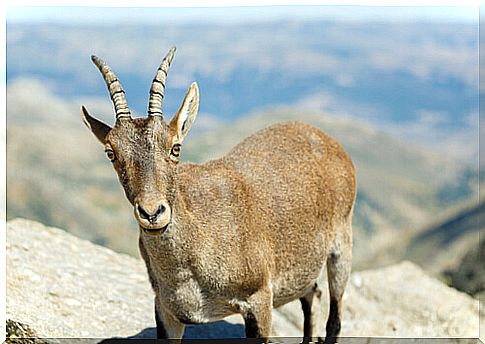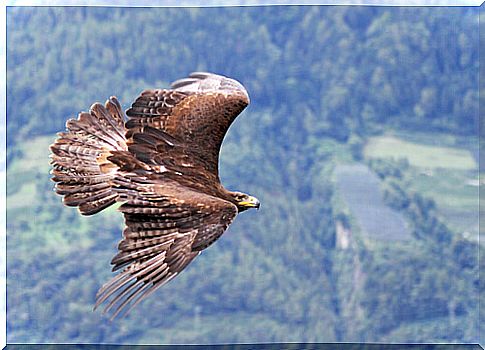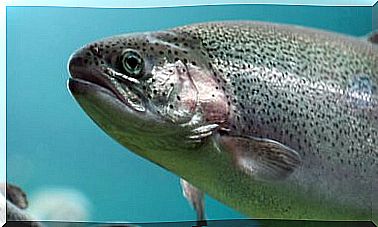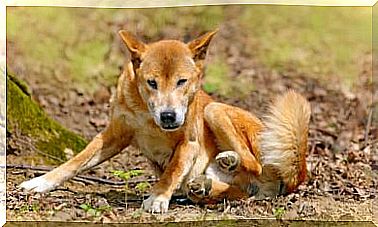7 Incredible High Mountain Animals

We are struck by how these high mountain animals can survive in such adverse conditions. However, as the popular saying goes “nature is wise” and has allowed them to adapt to such circumstances. In this article we will provide you with information about some species that inhabit the highest areas of the planet.
What is the high mountain?
To begin with, it is worth mentioning some characteristics of the high mountains: it is an elevated terrain with cold temperatures and precipitations in the form of snow. In addition, the vegetation is very scarce and that prevents certain animals from settling there.
Although the term ‘high mountain’ may differ depending on the country, it is estimated that from 2,500 meters it can already be considered in such a way. What no one can dispute is that at 3,000 meters above sea level the climatic conditions are harsher, and the solar radiation is higher.
In this sense, it should be noted that the lack of oxygen is one of the main reasons why mammals and birds do not usually live in these areas. It is, of course, not the most favorable environment.
What high mountain animals exist?
The fauna in this ecosystem is characterized to a greater extent by invertebrates, and by only some vertebrates such as reptiles and birds. Some examples of high mountain animals are:
1. Goat
It can live in all environments that have a certain slope or elevation, since they have an organism adapted to both cold and rocks. They take the opportunity to eat during the first hours of the morning because, in addition to the herbs, they enjoy the dew that soaks the leaves. They have the ability to climb without problems and are characteristic in Switzerland, China, Iran and Argentina.
2. Griffon vulture
This vulture is one of the few that live in Europe. It can survive high altitudes and mountainous areas trimmed with deep valleys.

They are seen on the edges of cliffs and ravines at dawn, waiting for the heat to help them in their flight, as they take advantage of the rising breezes to move. In some cases, they migrate to warmer areas when winter arrives.
3. Vermilion frog
It is one of the most widespread high mountain animals in the world, since it lives in Europe and much of Asia. It prefers to spend its adult life on land, and looks for humid places to breed in spring. It has a robust body of up to nine centimeters, of various colors and spots, and the females are larger than the males.
4. Golden Eagle
It is one of the most widely distributed birds on the planet, since it can be seen in North America, Asia, Africa and Europe. In this last continent it is common in the Alps and in the mountainous areas of the Iberian Peninsula.

It adapts very well to all media and if necessary it feeds on carrion. However, it prefers to hunt from the air thanks to its strong claws, hooked beak, excellent eyesight, and great speed.
5. Snow vole
This rodent, which weighs 70 grams and measures 140 millimeters, has a grayish coat with brown tones and a white belly. It inhabits the mountainous areas of Europe and Asia, including the great massifs of the Alps, the Balkans and the Carpathians.
It has adapted to rock ecosystems up to 4,700 meters above sea level. Although it is herbivorous, it can also consume insects and often stores food for the winter.
6. Common salamander
It is an amphibian with terrestrial and nocturnal habits – it only comes out during the day if there is a lot of humidity – that only enters the water to lay its eggs, and that can be seen in European mountainous areas. It can be up to 30 centimeters long and is characterized by its striking colors, black and yellow.

7. Sarrio
Also known as Pyrenean chamois, it is a small bovid found in the mountain ranges of southwestern Europe, including the Pyrenees, the Cantabrian mountain range and the Apennines. Both males and females have hooked horns, a light-colored body with spots on the face and a short tail.
Finally, they reproduce between October and November, gestation lasts 20 weeks and the female gives birth to only one young at a time.









